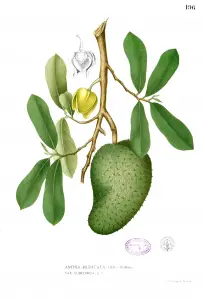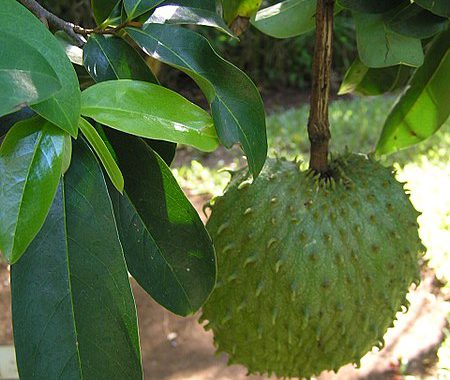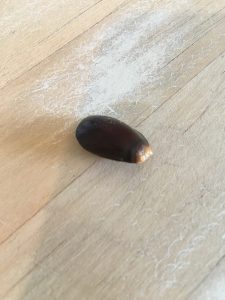 Guanabana fruit is also known as soursop and is harvested from the graviola tree. The tall tropical tree is a small, upright evergreen tree that grows 15 to 18 ft (5 to 6 meters) in height.
Guanabana fruit is also known as soursop and is harvested from the graviola tree. The tall tropical tree is a small, upright evergreen tree that grows 15 to 18 ft (5 to 6 meters) in height.What is the guanabana fruit used for in the kitchen?
What is guanabana fruit used for in natural medicine?
 The guanabana fruit and fruit juice can be eaten to treat worms and parasites, to cool fevers, to increase mother’s milk after childbirth. It is also used to treat diarrhea and dysentery.
The guanabana fruit and fruit juice can be eaten to treat worms and parasites, to cool fevers, to increase mother’s milk after childbirth. It is also used to treat diarrhea and dysentery.History of guanabana fruit in regional natural medicine
Peru
You find that a tea from the guanabana leaf is used for mucus reduction in the Peruvian Andes. The crushed seeds of the fruit are used to kill parasites. In the Peruvian Amazon the bark roots and leaves are used for diabetes and as a sedative and antispasmodic.
Guyana
Brazil
In the Brazilian Amazon, the unripened fruit is combined with olive oil. It is used externally for neuralgia, rheumatism and to treat arthritis pain.
Jamaica and Caribbean islands
- fevers
- parasites
- to bring in mother’s milk.
- to ease diarrhea.
- And, to treat cancer
Plus, it is also used for heart conditions, coughs, difficult childbirth, asthma, asthenia, hypertension and to clear parasites.





